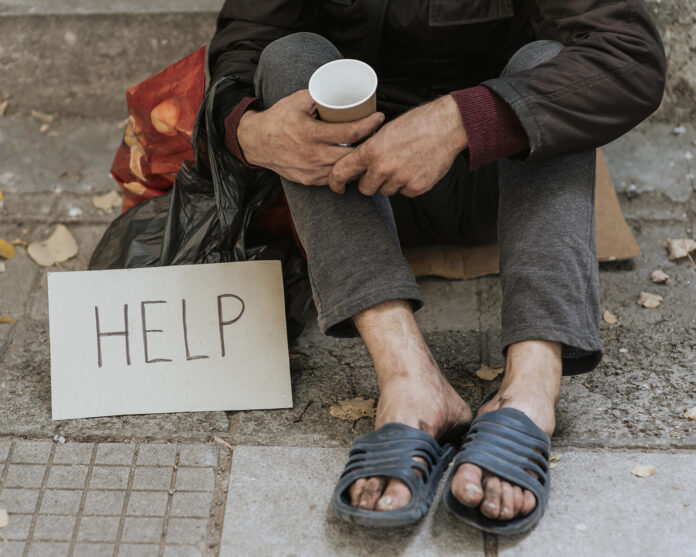Combating climate change is one of the most pressing challenges of our time. Not only technical progress, but also human behavior and motivation play a decisive role. Maslow’s pyramid of needs provides a valuable framework for understanding how different needs can influence the willingness to change. This article examines how Maslow’s theory can be applied to the fight against climate change and how different needs influence the motivation to participate in environmentally friendly actions.
Maslow’s pyramid of needs: an overview
Basics of Maslow’s theory
Maslow’s pyramid of needs is a psychological model developed by Abraham Maslow in the 1940s. It describes the hierarchy of human needs, which are divided into five levels:
1. physiological needs: Basic vital needs such as food, water, sleep and breathing air.
2. safety needs: Protection from physical and emotional dangers, stability and order.
3. social needs: Belonging, love and social interactions.
4. individual needs: Recognition, self-esteem and success.
5. self-actualization needs: Personal development, creativity and reaching one’s potential.
Maslow postulated that higher needs only have a motivating effect once the basic needs have been largely satisfied.
Physiological and safety needs: The base of the pyramid
Survival and basic needs
In the context of climate change, physiological needs are directly affected. Access to clean water, food and a safe environment depend on a stable climate. Extreme weather events, droughts and floods directly threaten these basic needs.
One example is the increasing scarcity of water in many parts of the world, which is being exacerbated by climate change. In regions such as the Middle East and North Africa, where water is already scarce, rising temperatures and falling rainfall are making the situation considerably worse.
Security needs and climate change
Security needs include both physical security and economic stability. Climate change calls this security into question by destroying livelihoods and creating economic uncertainty. Natural disasters such as hurricanes and forest fires jeopardize physical safety, while the loss of harvests and livelihoods threatens economic security.
One example is Hurricane Katrina, which hit New Orleans in 2005. The disaster caused massive destruction and forced thousands of people to leave their homes. The long-term economic impact was devastating, and many of those affected struggled with the consequences for years.
Social and individual needs: Community and recognition
Social needs: Community and cooperation
Climate change requires collective action and cooperation. Social needs for belonging and community can be a strong motivation to get involved in climate protection. Community projects such as urban gardening or local energy initiatives promote a sense of community and motivate people to work together on environmentally friendly solutions.
One example is the Transition Town movement, which encourages local communities around the world to develop sustainable and resilient ways of living. This movement promotes community projects that strengthen cohesion and at the same time support environmentally friendly measures.
Individual needs: Recognition and self-worth
Recognition and positive self-esteem play an important role in motivating people to protect the climate. People who feel that their efforts are recognized and appreciated are more willing to get involved in climate protection. Campaigns that emphasize and reward individual contributions can be very effective here.
One example is the “Energy Star” program in the USA, which labels energy-efficient products and thus offers both manufacturers and consumers recognition for environmentally friendly behavior. This recognition motivates both companies and individuals to develop and use energy-efficient products.
Self-realization: creativity and innovation in climate protection
Creativity and problem solving
Self-realization involves striving for personal fulfilment and achieving one’s own potential. In the context of climate change, this can mean developing innovative solutions and finding creative ways to protect the environment. People who are able to use their talents and skills to contribute to climate protection often experience a deep sense of satisfaction and fulfillment.
One example is the development of new technologies to combat climate change, such as carbon capture and storage (CCS) or the development of sustainable materials. Such innovations require creative thinking and problem-solving skills and make a significant contribution to climate protection.
Education and awareness-raising
Education and awareness-raising are crucial to empowering people to actively participate in climate protection. Educational programs that explain the causes and effects of climate change and demonstrate practical solutions can motivate people to change their behavior and take action to protect the climate.
One example is Al Gore’s “Climate Reality” project, which offers educational programs worldwide to raise awareness of climate change and motivate people to take action. These programs inspire people to create change in their communities and work towards a sustainable future.
The application of Maslow’s hierarchy of needs in climate protection
Maslow’s pyramid of needs offers valuable insights into people’s motivation in the fight against climate change. By understanding how different needs influence behavior, we can develop targeted strategies to promote willingness to change. From ensuring basic physiological and safety needs to promoting community projects, recognizing individual contributions and supporting creative problem solving, all of these aspects play a crucial role in the fight against climate change.
By applying the principles of Maslow’s pyramid of needs, we can take effective measures to motivate people to actively engage in climate protection and thus make a significant contribution to tackling this global challenge.
Read also
Green zones in urban areas: Quality of Life and Food Security in Times of Crisis and The Escalation of Geopolitical Tensions in the Age of Climate Change
and prosperity and environmental protection: how are they connected?
Sources:
1. “Climate Change and Water Scarcity” – World Resources Institute: https://www.wri.org/
2. “Hurricane Katrina: The Aftermath” – National Geographic: https://www.nationalgeographic.com/environment/natural-disasters/reference/hurricane-katrina/
3. “Transition Towns” – Transition Network: https://transitionnetwork.org/
4. “Energy Star Program” – U.S. Environmental Protection Agency: https://www.energystar.gov/
5. “Carbon Capture and Storage (CCS)” – International Energy Agency: https://www.iea.org/topics/carbon-capture-utilisation-and-storage
6. “The Climate Reality Project” – Climate Reality: https://www.climaterealityproject.org/



